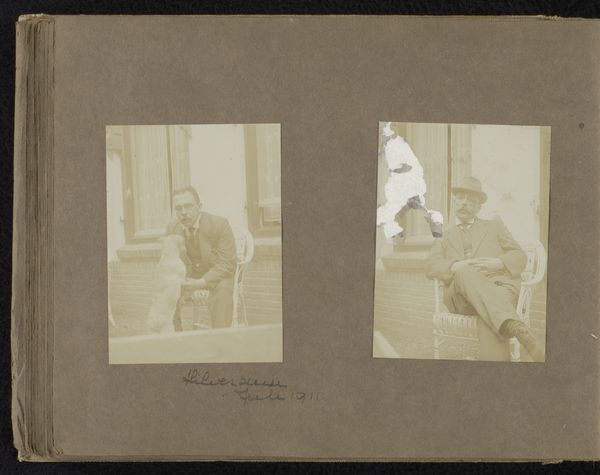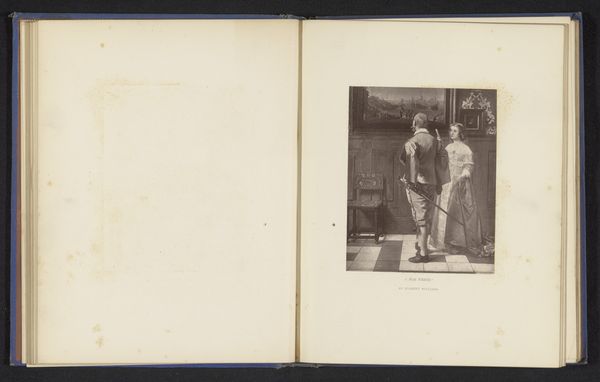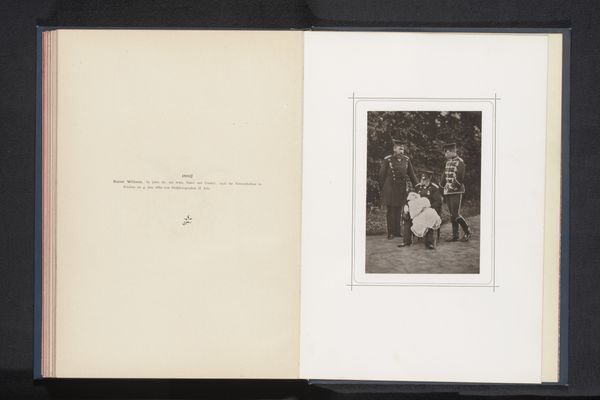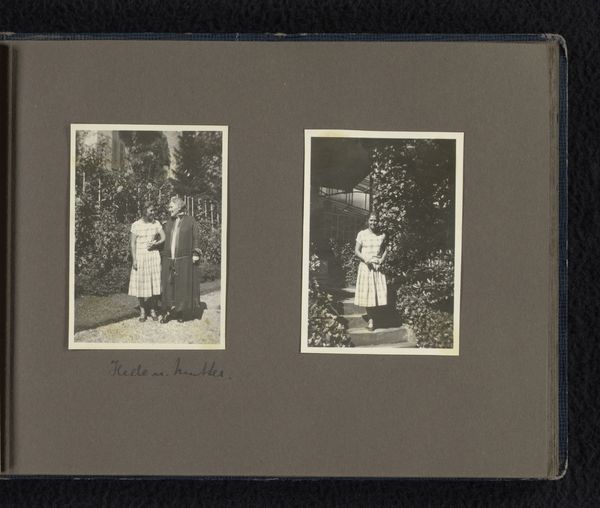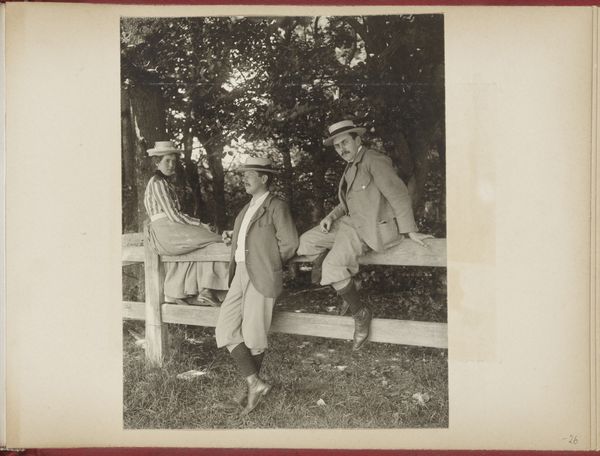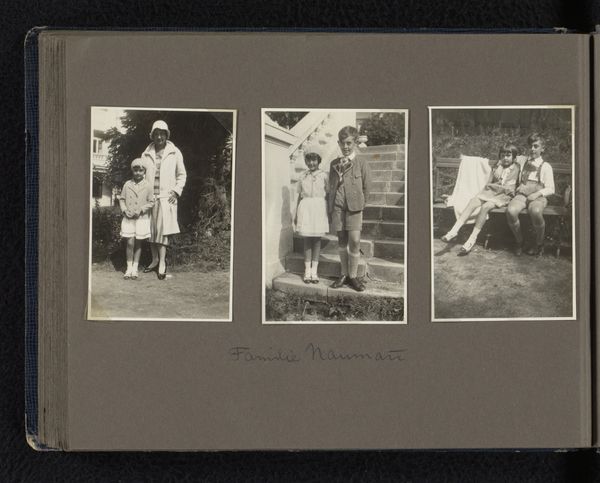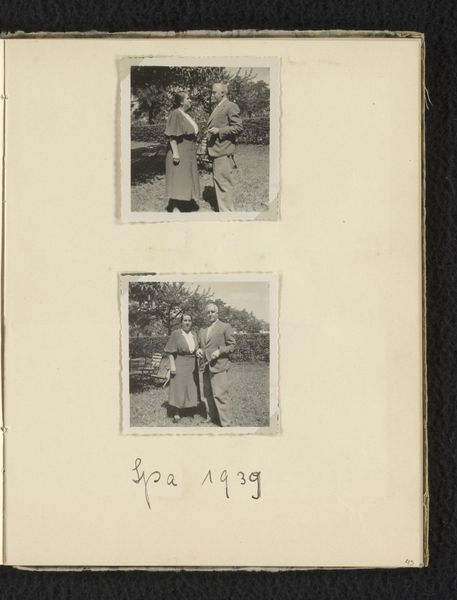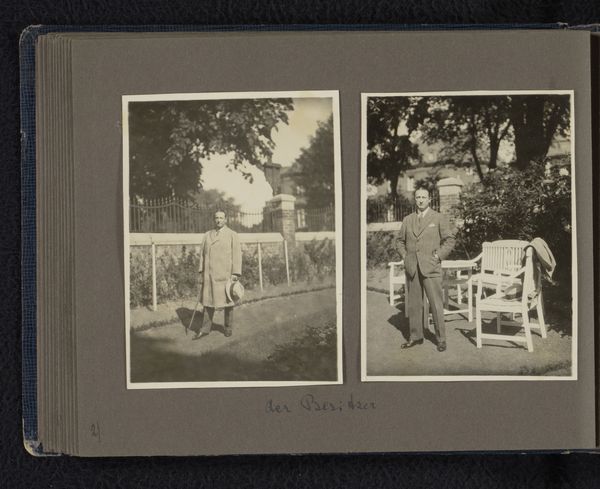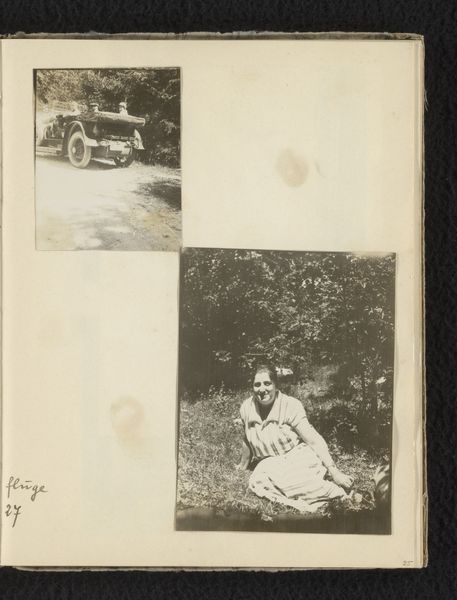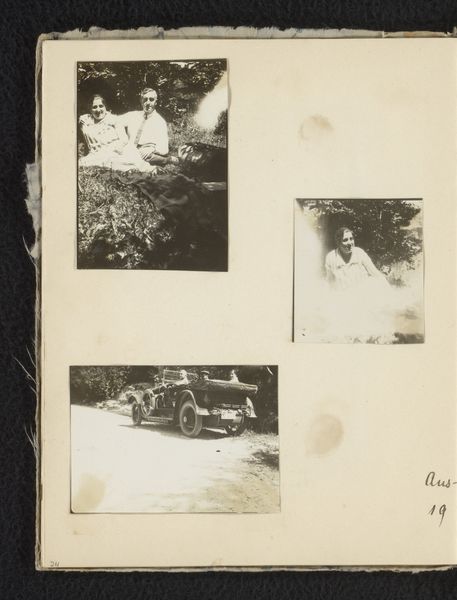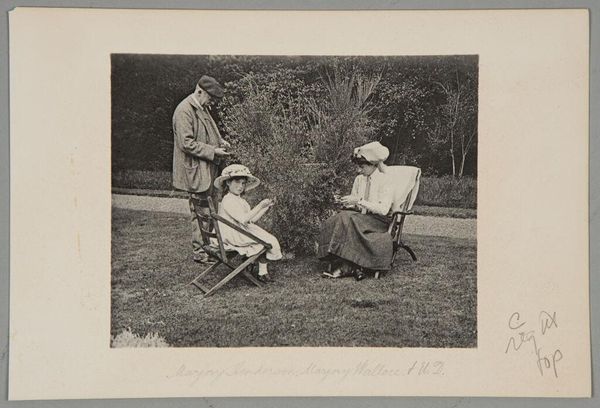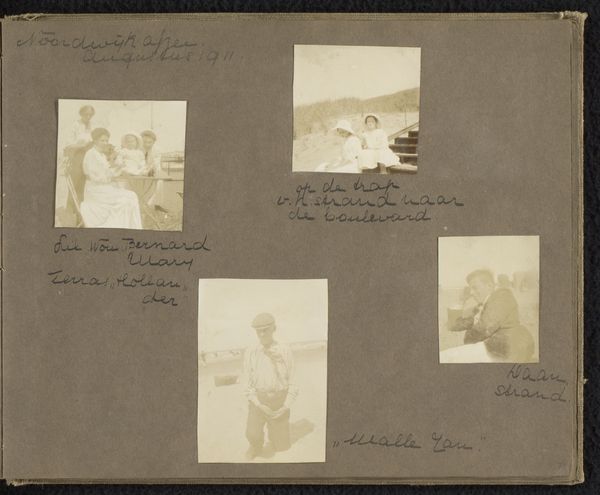
Isabel Wachenheimer drie maanden oud met haar moeder Else Wachenheimer-Moos, haar vader Eugen Wachenheimer en een onbekende verpleegster, september 1928, Stuttgart 1928 - 1929
0:00
0:00
photography, gelatin-silver-print, albumen-print
#
portrait
#
mother
#
photo restoration
#
photography
#
gelatin-silver-print
#
modernism
#
albumen-print
Dimensions: height 110 mm, width 85 mm, height 255 mm, width 330 mm
Copyright: Rijks Museum: Open Domain
Editor: Here we have a page from the Wachenheimer family album. These gelatin silver prints, dating to around 1928-1929, capture Isabel Wachenheimer at three months old with her parents and a nurse. There’s a formality to the poses, yet an intimacy conveyed in the candid moments. What stands out to you about these photographs? Curator: I'm struck by the socio-economic context embedded in these images. Consider the material conditions: gelatin silver prints, a relatively accessible medium in the late 1920s, democratizing portraiture to some extent. Yet, the presence of a nurse signals a certain level of affluence, highlighting class distinctions. Note how the construction of family is visually rendered. The labor, often invisible, that goes into maintaining this idyllic domestic scene is momentarily captured, yet simultaneously obscured. The manufacturing process of the paper, the chemical development, and the act of capturing these moments—all are labor processes. Editor: That’s a great point. The material production aspect completely changes how we view them. It is also interesting that they appear on the pages of an album. How does this added materiality contribute? Curator: The album format further emphasizes the construction of memory and identity. These aren't just snapshots; they're carefully curated fragments of a narrative meant to be preserved and presented. What story is the family crafting through this specific selection and arrangement? Who is this album *for*, and how might its reception shape our understanding of the Wachenheimer's social standing and aspirations? Think, also, about the hands that have turned these pages. What sort of tactility is recorded here? Editor: So, analyzing the materiality gives us insights into labor, class, and how families constructed their identity at the time. Curator: Precisely! It challenges us to see beyond the surface of sentimental imagery. Hopefully next time you encounter an image, you can consider the manufacturing of it, as well as the historical labor used to produce it.
Comments
No comments
Be the first to comment and join the conversation on the ultimate creative platform.
